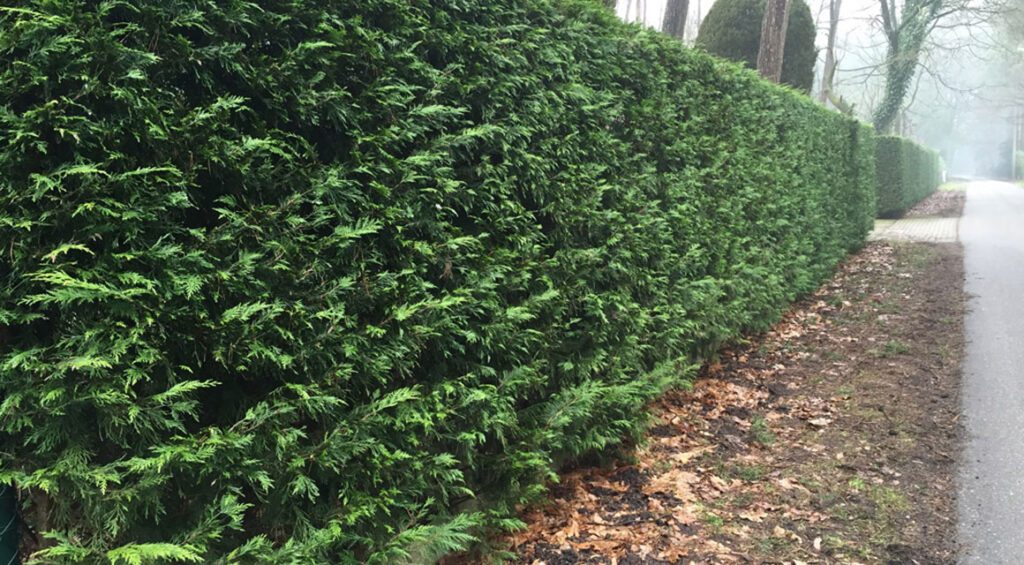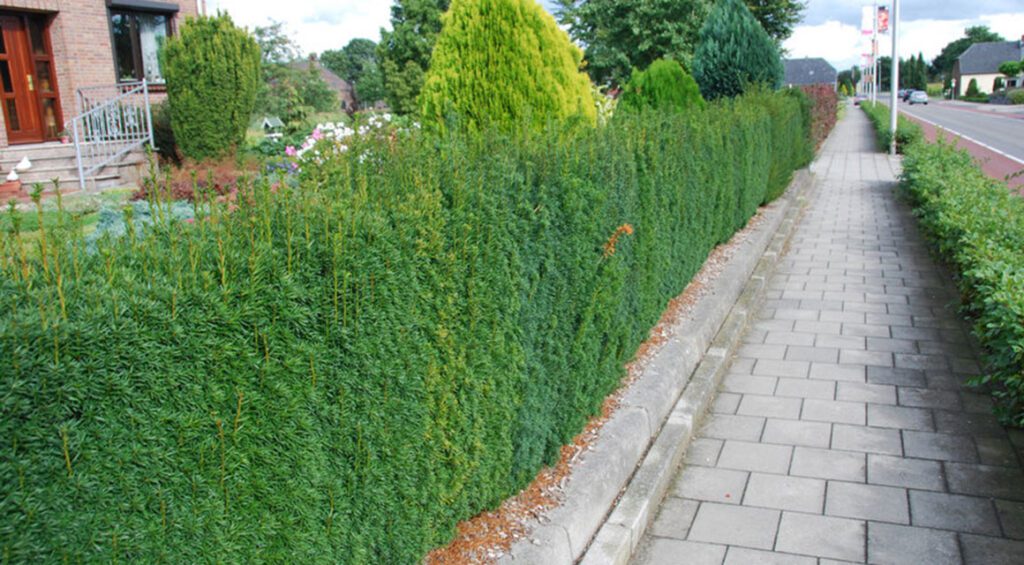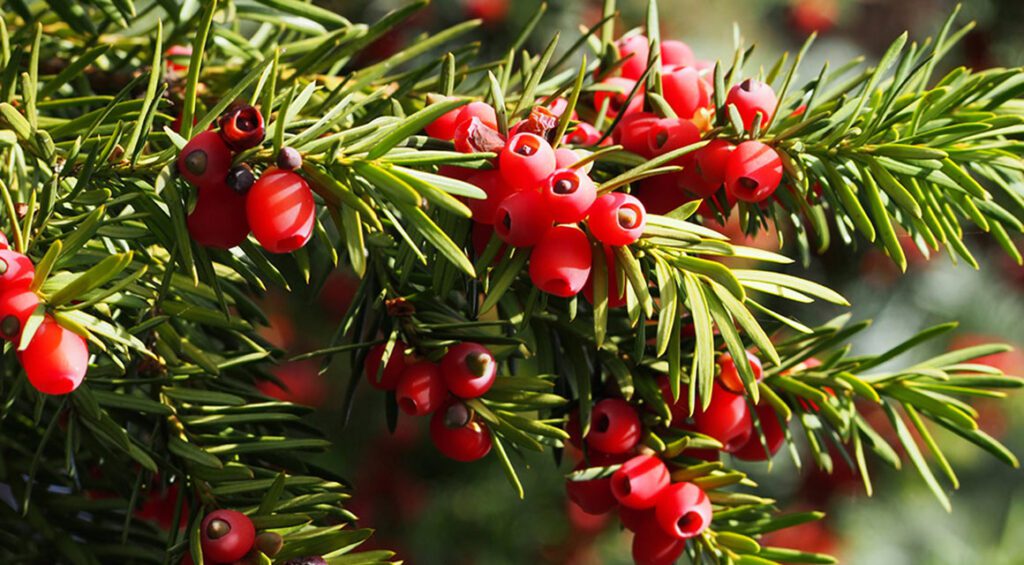When thinking of hedge plants, many automatically think of conifers. As hedge plants, conifers have many good qualities that are especially beneficial in winter.

Contents
Green even in winter: conifers as a hedge.
Now that it’s getting colder, conifers really catch your eye. Conifers, or conifers, are mostly evergreen trees that retain their green color throughout the year. Conifers are often used as hedge plants, as they are very suitable for this purpose. They are hardy hedge plants that are generally hardy and do not require much maintenance. They also have a very dense growth habit. Conifers are ideal plants to create a privacy hedge. A good and natural alternative for a fence.
Of course, every conifer is different. Most of them are evergreen, but the primeval redwood and the Japanese larch, for example, are not among them. The rate of growth also varies greatly from one conifer to another. It can range from 15 to 100 centimeters per year. Most conifers, however, grow relatively quickly. Some actually grow up to a meter a year! If so, you’ll need to prune more often, but other than that, conifers aren’t much work. Once they’ve grown in the garden, you’ll only need to water them during dry spells.
The term “conifer” means nothing more than “bearing conical fruit” and refers to the cones that grow on conifers. Examples include fir and pine cones. Conifers are divided into two groups: Coniferous and Scaly Conifers. Scale conifers include thuja, false cypress, and Leyland cypress. The overall appearance of scale conifers appears rounder than conifers. Also, the scale needles feel much softer. Classic hedge conifers are often about scale conifers, with the exception of yews. Scale conifers usually grow very densely.

Care of conifers
Conifers require relatively little care. In the first few weeks after planting, water regularly so that the roots can grow well. Later, you can water less frequently. During long periods of drought, be sure to give more water. Otherwise, care consists mainly of pruning. For slow-growing conifers, such as yew, one pruning a year is sufficient. However, Leyland cypress, which is the fastest growing of all conifers, should be pruned more often.
Prune the first time before the longest day of the year, usually June 21, and then as needed throughout the summer. When the weather gets colder, do not apply the hedge trimmer. Then the plant can not properly recover from the cut and may suffer damage. It is best to prune on a cloudy day so that the sun does not burn the intersections. Full sun can also burn the needles that emerge after pruning and are not yet used to the sun’s rays. A light drizzle when pruning is beneficial, as branches regenerate better from pruning in damp weather. Therefore, take advantage of a dull day to beautify your garden.
Conifers are often used for formal hedges. They are then cut into a narrow shape. To make the top straight, stick two long sticks into the ground at the ends of the hedge and stretch a string at the desired height. Always use sharp and clean tools. For a conifer hedge, use a large hedge trimmer or an electric hedge trimmer. However, be careful not to cut into the old wood and always leave a few green branches. Most conifers will not recover and sprout if you cut them back too far, leaving bare spots in the hedge. That’s why it’s important to prune regularly.

Many different conifers
There are great differences between individual conifers. Among the most popular hedge conifers are yew, thuja (tree of life), mock cypress and Leyland cypress. Yew is a coniferous tree that bears red fruits in autumn, depending on the variety. A distinctive feature of yews is their good pruning tolerance. Also, unlike other conifers, they resprout even on old wood. Yews are low-maintenance hedge plants that are well suited for topiary. Even though the needles are much softer than those of other conifers, always wear gloves when pruning because yews are poisonous plants.
Leyland cypress is the fastest growing of all the hedge conifers in our web store. It therefore requires a little more effort to keep them in a nice shape. But in return, you will have a tall hedge in a short time. Note, however, that yews are not completely opaque in the beginning. This usually takes a few years and requires regular pruning. Leyland cypresses are elegant plants that make beautiful, formal hedges when properly cared for.
Thuja and false cypress are very similar. Both are available in a variety of colors. False cypress comes in a gray-blue and a yellow variety. Of thuja, on the other hand, we have various shades of light green. Both plants will frame your garden in a stylish way.

